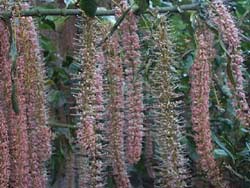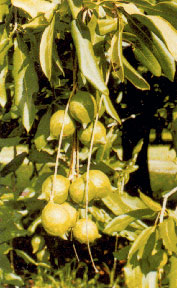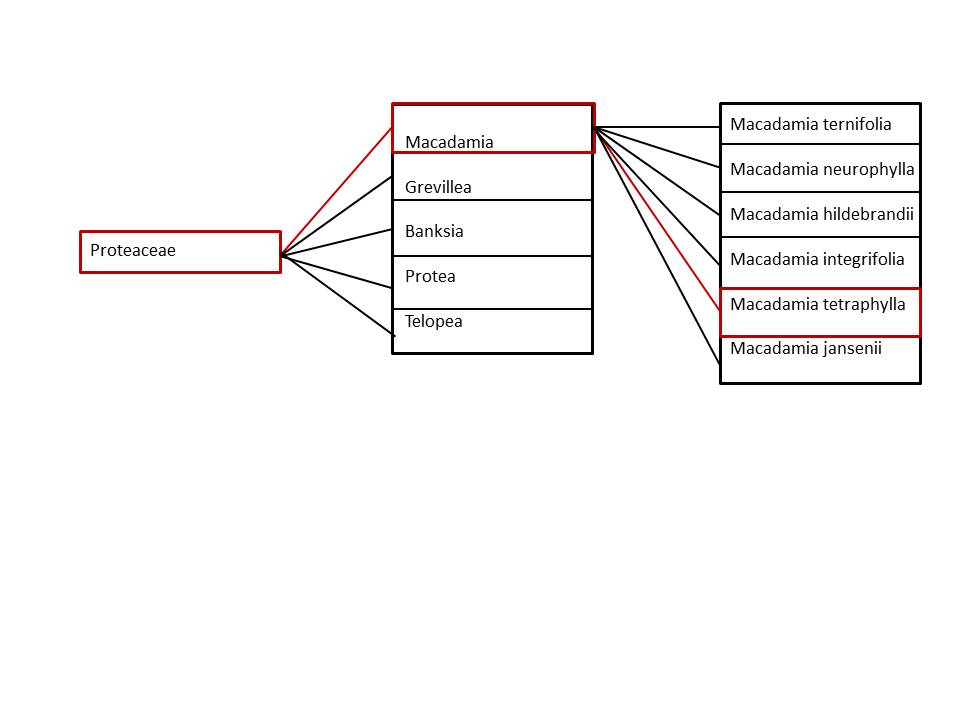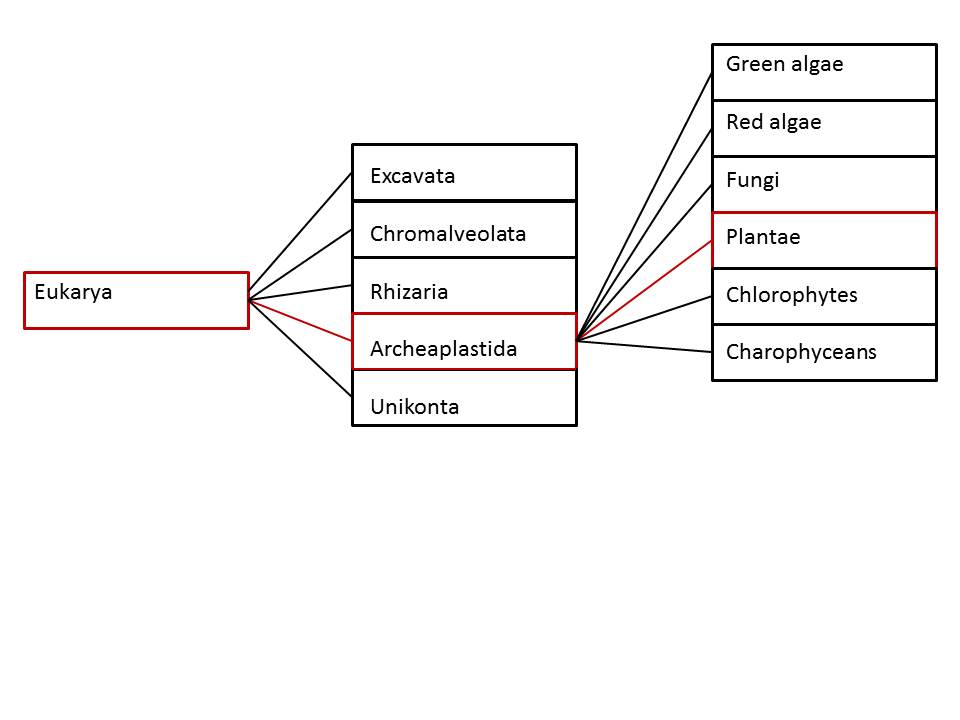Classification: How it is related to others
Meaning of the name:
The genus Macadamia got its name from Dr.
Ferdinand Mueller who named it after his friend Dr.
John Macadam. The species name tetraphylla
is a combination of two Greek words. Tetra
meaning four, and phylla meaning leaf.
As you will see later, this name is very fitting
because the leaves in Macadamia tetraphylla
occur in groups of four. It received its
common name because it originated in Australia.
In addition, it has either a smooth or rough shell
covering for the nut.
Below is the classification of Macadamia
tetraphylla.
Lineage-
Domain: Eukarya
Supergroup: Archaeplastida
Kingdom:
Viridiplantae
Phylum:
Streptophyta
Subphylum:
Streptophytina
Class:
Magnoliopsida
Order:
Proteales
Family:
Proteaceae
Genus:
Macadamia
Species:
Macadamia tetraphylla

Eukarya: One of three
domains consisting of eukaryotic cells, which are
organisms that have a nucleus and discreet
organelles.
Archaeplastida: One of
five supergroups that consists of organisms with
plastids that are surrounded by two membranes.
Viridiplantae: Kingdom
comprised of all living or extinct plants.
Plants are defined as multicellular organisms that
typically produce their own food through
photosynthesis.
Streptophyta: A
phylum with all land plants as well as some green
algae (which are protists).
Streptophytina: A
subdivision of Streptophyta which contains
the classes Charophyceae and
Embryophyceae.
Magnoliopsida: A class
consisting of all flowering plants. Flowering
plants are defined as plants that produce a covered
seed, a flower, and a fruit. This fruit,
however, is not always what we generally think of as
fruit. It is, in fact, the food source for the
seed. 
Proteales: Order whose
members are dicotyledonous flowering plants.
These type of flowers have some particular traits
such as: two cotyledons during growth, flowers in
multiples of 4 or 5, major leaf veins reticulated.
Proteaceae: A family of
Australian and South African shrubs and trees with
leathery leaves and generally clustered, tetramerous
flowers.
Macadamia: Genus whose
members are Australian, ornamental evergreens.
Ornamental means plants that are generally
decorative and used in gardening or landscapes.
Macadamia tetraphylla: An
ornamental evergreen tree that produces a
rough-shelled, edible nut.
The grayish-green
nut grows in pairs around a flower spike, and has a husky outer coving
called a pericarp. They can grow 60 feet tall
and roughly 50 feet wide. They produce shiny,
leathery leaves that are about 7-12 inches long,
which occur in groups of four. This species of
Macadamia has fragrant pink flowers.
The
phylogenetic tree above is showing how the Macadamia
is sorted within the Family Proteaceae.
Listed are some of the more common genus groups
within Proteaceae. From there it
lists the species of Macadamia, which there
are around 8 determined species.
The phylogenetic tree at the bottom is showing where the
Kingdom Plantae is, relative to every other
eukaryote. Both of these trees are claudistic
trees. They were determined through molecular
and genetic biology. In these trees, past
ancestors are taken into account when determining if
groups of organisms are related to on another.

Continue on to Habitat!